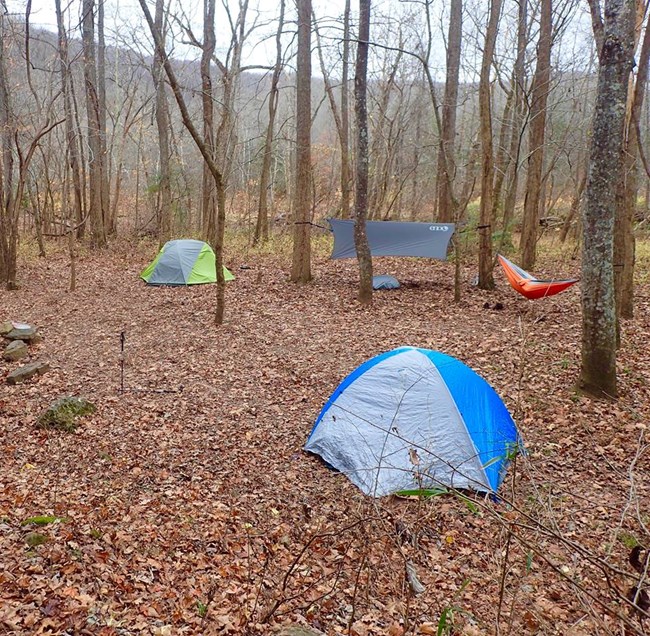
Photo: L. Eddings/NPS Floating or hiking or both, just overnight or for several days, the Buffalo National River offers visitors several ways for exploring the vast scenic backcountry and wilderness areas throughout the park. Visit the park's Preventative Search and Rescue page to ensure that you are prepared for a backcountry experience. In order to minimize impacts and help preserve the pristine beauty of the wilderness for generations to come, please follow the rules listed below. Please visit the park's Leave No Trace page and practice the seven principles while exploring the backcountry.
Camping
Sanitation
Campfires
General InformationAlways check weather and water levels before and during your trip. Heavy or prolonged rains, which may occur upstream and out of sight, can raise river levels rapidly. Rises of over a foot an hour can occur at any time of the year, and the river can rise more than 25 feet in a single day. Always leave a detailed trip plan with a reliable person who is NOT going on the trip with you. Instruct them to alert the authorities if you are not back by the expected time. If an emergency situation occurs, visitors should not depend on cell phones as cell service is very limited along the river. In case of emergency contact the park's 24-hour dispatch center, Midwest Region Ozark Communication Center (MROCC), at 1-888-692-1162. Suggested items for a trip into the backcountry
Backpacking Trails |
Last updated: September 20, 2024
